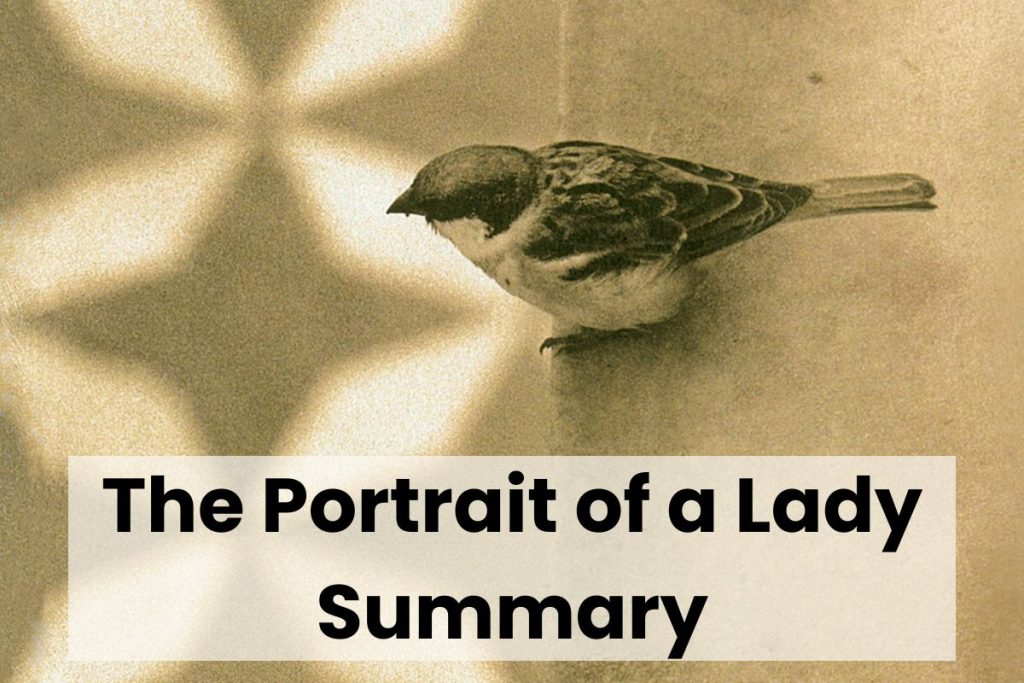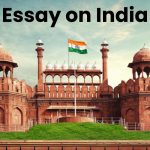The Portrait of a Lady Summary: The Class 11 Syllabus of the CBSE Board includes the story, “The Portrait of a Lady” by Khushwant Singh. This is one of the very important chapters. The format of the CBSE English examination is such that it requires the students to answer on the basis of the gist or the specifications of the story or the poem. It is different as compared to the other boards. Your questions can be picked up from anywhere within the story and you will be required to answer them very specifically if you intend to score good marks. The chapter may have a good weightage in the paper and you must be thorough with various aspects of the story and even the characters.

In the ensuing space, we have provided an insightful and profound The Portrait of a Lady Summary in English which can help you prepare for the exams. We have also discussed a few themes and important characters that can formulate important questions. Read the following article and prepare for the chapter easily!
The Portrait of a Lady Summary
The story, “The Portrait of a Lady” is authored by Khushwant Singh. It has been fixated on the very first chapter of the book, “English Hornbill”. The book is included in the academic curriculum of the Central Board of Secondary Education CBSE Class 11. The students need to deeply educate themselves about the aspects of the story in order to be thorough with it. As it is known that the kind of questions which the CBSE Board puts up to the students in the English Paper is of the type where they need to answer with the context of the story and comprehension, very specifically. Thus, the students must read the theories and concepts of the story very meticulously. You need to remember the events in chronological order. This is highly imperative. Thus, a summary always comes in handy as it helps you under the gist in an organised manner.
Additionally, the summary helps you understand the general nature of the literature and the aspects such as morals, theme, backdrop, and more. These can be very handy, especially if you are to answer a specific question pertaining to the same. You can also easily remember the actions of the prime characters and this will assist as you intend to write the character sketches. In a moment of revision, a summary is the best way to prepare again while referring to the overview.
The Portrait of a Lady by Khushwant Singh
The Portrait of a Lady by Khushwant Singh is a very simple story where the author explores his relationship and dynamic with his grandmother. The story takes a toll with time and evolves in various aspects of the duration of life. The writer carefully judges the development of the bond at distinctive instances in time, with respect to the immaturity and the distance between the growing ages and ideologies. The generation gap keeps on widening until the death of the Grandmother. It is then that the author completely understands her character and her way of leading life. The description of the grandmother by Khushwant Singh is incredibly personal and heartwarming. He maintains the charms of the relationship he shared with her at different ages in his life. His grandmother’s simplicity lay in her compassion for the world and walking on the path that was taught to her.
Theme & Backdrop of Class 11 Story: The Portrait of a Lady
The story revolved around the basic life of the author with respect to his grandmother. He explains the evolution of his bond with her from his childhood to the day when she passed away. The story proceeds in a very slow and heartwarming tone. The basic attributes of life are well presented by Khushwant Singh in order to express his intent. He sets the story on a timeline where as the story proceeds, he notices the constant in his life, which is his grandmother. The story describes their relationship and how time plays a very prime role. He further mentions the details of his grandmother’s death depicting how she leads her life in peace by being compassionate for God and Animals. His explanation of her religious interest in context to his education explains the growing generation gap. The story is about family values.
Check this: Essay About Myself and My Personality, Introduction
Summary of the Story, “The Portrait of a Lady”
The story opens with a description of the Grandmother by the author where he explains how his grandmother looks and how people described her to be extremely pretty and young. It was hard for the writer to imagine, as he says, “Almost Revolting”, that his grandmother could be all that others described her to be. He always saw her as someone short, fat, and bent. Her face was wrinkled and she was quite old. For a child, to imagine that a person so old can be absolutely flawless is a bit of a stretch. She always wore spotless white and had one hand resting on her waist and the other counting the beads of the rosary in prayer to God. He has seen a portrait of his grandfather who was old too and wore a turban. His grandfather donned a white beard extending to his chest and it was the innocent who could only imagine the grandfather as someone who has a lot of grandchildren but cannot be the one who could get married and have children.
The author describes his early relationship with his Grandmother as something very pure and good. She used to make sure that he woke up on time and assist him in getting ready for the day. She was the one who sent him to school on time. They used to walk together till she dropped him off at school and after doing so, she perpetually visited the nearby temple in a routine. Further, she always read scriptures and recited prayers. As he used to get back from school with his grandmother, stray dogs always accompanied them and his grandmother used to eventually feed them with leftover chapatis. His childhood was such that he used to sing the alphabet and recite prayers in the morning by sitting on the verandah along with his friends. The description of childhood of the author reflects simplicity and life loaded with basic values and traditionalism.
This evolved drastically when the author and his grandmother had to move with his parents to the city. Their life changed incredibly and so did his bonding with his grandmother. They shared a room but not ideologies and a way of life. Now, the author’s life was structured in a way that he started receiving a very organised and modernist education at an English medium school. He was not dropped off by the grandmother and there were no stray dogs who accompanied them as they returned back from school walking. Even though she inquired him about his day, she failed to understand the curriculum and help him with his education. She was unable to connect with the languages and often complained that the students are not taught the basic education of religion and the education is very disconnected from God and the scriptures. She tries to educate him and connect with his life as much as possible through dialogue but still, they grow apart and as the author gets meddled in the chores of his life and education, they see each other very less.
Also Read: Scholarship After 12th 2024- Government & Private Funded
Things changed for the worse when the author grew further to get admitted to the University. He grew apart from his grandmother more and more but she continued to constantly keep on doing what she does, like spinning the wheel, counting the beads while praying and feeding the sparrows. This was something that she enjoyed. During the dawn, she would feed sparrows and they would in turn express their adoration for her by sitting on her legs, head, and shoulders. She used to only serve them tiny morsels of bread and she received a huge amount of love from them in return. She was a calm person who interfered and intervened negligibly in people’s lives. She mostly sat peacefully engaging in things that she loved doing, not disturbing anyone, and not getting involved in conversations.
It was later that the writer made a strong and courageous decision when he prepared to move out of the country for the purpose of higher education. He noticed how she came to drop him off at the railway station and did not express her sentiments. All she did was religiously recite her prayers and simply kissed on his forehead. For him, it was like the last touch of love that he could have received from his grandmother. He was afraid that her deteriorating age might take her away from them.
It was five years later that the author finally returned home. He noticed that everything was the same. She was still the same, a little bit older, but the same. She came to pick him up at the railway station, where he had left her and all she did was innocently hug him with affection. She did not say a word and she was just the same. She fed sparrows, disliked modernist music, and stood strongly against the omission of religious teaching in the school. She was compassionate about what she felt and was very religious in approach.
Also Check: Essay on My Vision for India in 2047
It was unusual when she did not recite her prayers on one occasion. She rather gathered women of the neighbourhood and engaged in a religious music ceremony. The next morning, her health showed signs of illness. While the doctor confirmed that she was alright and will affirmatively recover, she was determined that her end was near. She knew that she will not live any further. She instantly stopped having even little conversations. She only lay on her bed reciting her prayers and eventually passed away. As the family prepared for the funeral, they noticed that the sparrows had gathered. The writer’s mother offered them food but they refused to have any and simply sat on the verandah. They mourned her death leaving everyone in the realisation of her lifestyle and affection.
Aspects and Characters
The author has learnt basic ethics and values in life from his grandmother. The affection which the sparrows express for her is beyond any education. This is something that is a consequence of her passion and humanity. The story evolves in a manner that explores various aspects such as the generation gap which eventually acts as a barrier between him and his grandmother. Further, the religious character of his grandmother accounts for the peace of her mind and her calm. She was always confident of God’s plan and accepted her destiny. She was a character of strength.
One major concept of the story is family bonds and values. No matter what the author does in his life, his grandmother remains to be a constant. He changes incredibly with time and grows but she fixates on her life. She is his family and this somehow depicts that no matter how far we go, our family stands for us and they are the constant in the fast pacing and changing world.
Moral of the Story
Through The Portrait of a Lady Summary, we can reach the conclusion that the grandmother’s life was full of peace and compassion. When the sparrows mourn her death, it reflects how compassion changes the world. She was unproblematic and very adamant about her routine. Her life was based on simplicity. The author’s realisation of her constant presence is reflective importance of family. No matter how advanced education can be, one can only obtain the basic values and morals of life from family. The story is also reflective of how life changes with time and the significance of the generation gap in family and relationships.
Let us know your thoughts on The Portrait of a Lady Summary in the comment box below!






